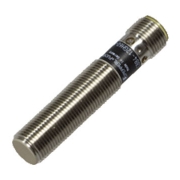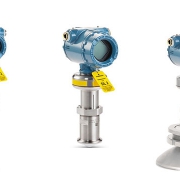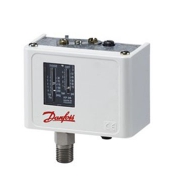Capacitive Sensors
Capacitive Sensors
Capacitive sensors can be used to detect metal objects as well as nearly all other materials. These sensors are often used in applications including level, flow control for the detection of liquids, grains, and powders.
Standard Capacitive Sensor Product features:
- 12, 18 and 30 mm cylindrical styles of stainless steel or plastic housings
- 5mm thin rectangular and long-range 80 mm x 80 mm x 40 mm styles
- Sensor outputs of 3-wire DC and NAMUR output types
- Models with hazardous area approvals
What is a Capacitive Sensor?
Capacitive proximity sensors are non-contact devices that can detect the presence or absence of virtually any object regardless of material. They utilize the electrical property of capacitance and the change of capacitance based on a change in the electrical field around the active face of the sensor.
Applications of Capacitive Sensors
- Precision positioning
- Disc drive industry
- Precision thickness measurements
- Non-conductive targets
- Machine tool metrology
- Assembly line testing
- Testing the moisture content of grain
- Soil moisture
- Humidity
- Detecting water content in fuels
- Fuel composition sensors (for flex-fuel vehicles)
- Capacitive load cells
Features
- 4 mm flush
- Operating distance adjustable via potentiometer
- Suitable for foodstuff conditions
- Resistant against aggressive media
Technical Data
Switching element function
- PNP
Rated operating distance
- 4 mm
Installation
- Flush
Output polarity
- DC
Assured operating distance
- 0 … 2.88 mm
Installation conditions
- A 0 mm
- B 0 mm
- C 15 mm
- F 15 mm
Operating voltage
- 10 … 36 V DC
Switching frequency
- 0 … 50 Hz
Reverse polarity protection
- reverse polarity protected
Short-circuit protection
- Pulsing
Voltage drop
- ≤ 2.5 V
Operating current
- 0 … 100 mA
No-load supply current
- ≤ 12 mA
Switching state indicator
- LED, yellow
Ambient temperature
- -25 … 70 °C (-13 … 158 °F)
About Pepperl + Fuchs
In 1945, Walter Pepperl and Ludwig Fuchs founded a small radio workshop in Mannheim, Germany, based on the principles of inventiveness, entrepreneurial foresight, and self-reliance. The experience they acquired was transformed into new ideas, and they continued to enjoy developing products for customers. The eventual result was the invention of the proximity switch. This innovation represented the starting point of the company’s success story.
Today, Pepperl+Fuchs is known by customers around the world as a pioneer and an innovator in electrical explosion protection and sensor technology.



